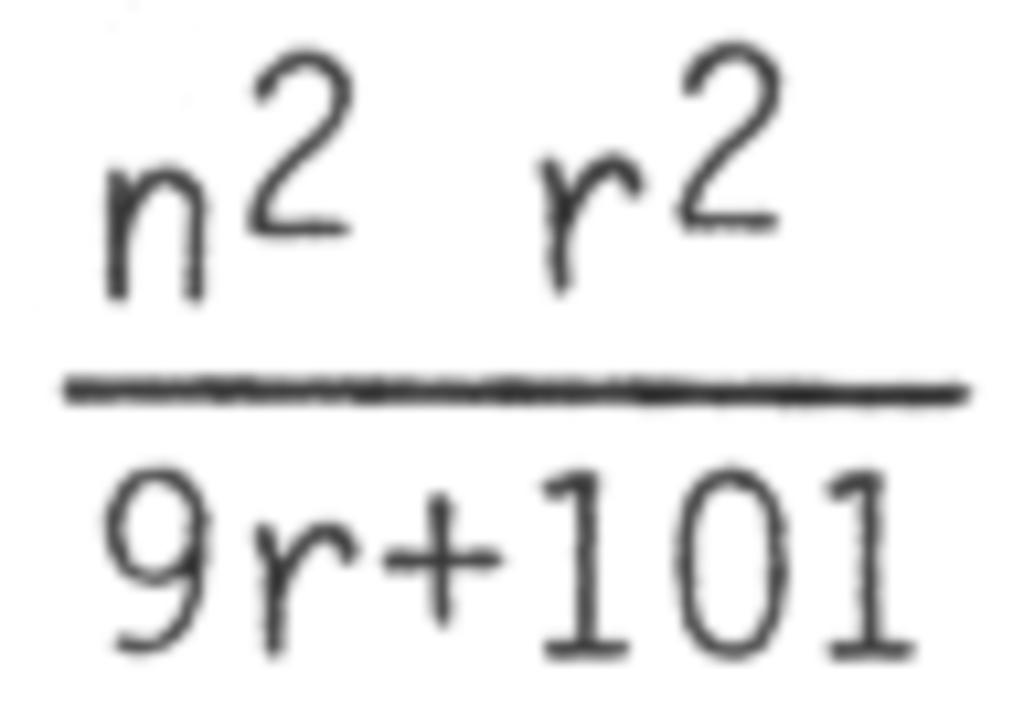TCBA Volume 6 - Issue 1
Page 8 of 18
Table I values were obtained using the following formulae and data:
- Wire spacing chosen was 0.1 inch
- Wire length is 29,520 inches (1/4 wavelength for 100 kHz)
- Circumference = ℼd
- Turns (n) = wire length/circumference
- Coil length (l) = n x 0.1
- Inductance (L) in uH =
This is Wheeler's formula for long single layer solenoid inductors. Values obtained are approximate but practical. Accuracy falls off at both extremes of length to diameter ratios. The inductances in uH were divided by 1,000 to convert the values to mH.
A capacitance of 60 uuF was assumed to be typical of a Tesla coil secondary with a 20-inch diameter toroid, 4 feet above the ground level. Empirical data indicates an approximate 40 uuF for the toroid. Twenty uuF was assigned to interwinding and cylindrical surface capacitor for a total of 60 uuF. It must be recognized that interwinding and cylindrical surface capacities will vary with coil diameter. However, for the purpose of this dissertation, the differences are assumed to be small. Resonant frequencies for the inductances listed in Table I, in parallel with 60 uuF, are shown in Table II.
Table II
| Coil Diameter | Inductance | Capacitance | Resonant Frequency* |
|---|---|---|---|
| inches | mH | uuF | kHz |
| 5 | 11.6 | 60 | 190.7 |
| 10 | 22.4 | 60 | 131.2 |
| 15 | 31.8 | 60 | 115.2 |
| 20 | 39.4 | 60 | 103.5 |
| 25 | 45.2 | 60 | 96.6 |
| 30 | 49.2 | 60 | 92.6 |
| 35 | 51.8 | 60 | 90.2 |
| 40 | 53.2 | 60 | 89.0 |
| 45 | 53.7 | 60 | 88.6 |
| 50 | 53.5 | 60 | 88.8 |
| 60 | 51.7 | 60 | 90.3 |
| 70 | 49.1 | 60 | 92.7 |
| 80 | 46.2 | 60 | 95.6 |
| 90 | 43.4 | 60 | 98.6 |
| 100 | 40.6 | 60 | 101.9 |
Conclusions
- The use of the quarter-wavelength principle for wire length is only useful in the preliminary design of a single-ended grounded Tesla coil secondary.
- The frequency of resonance of a Tesla coil secondary is usually other than that calculated when using the quarter-wavelength principle for coil wire length.
- Factors contributing to changes in frequency of a Tesla coil secondary wound with a quarter-wavelength of wire include:
- The wave propagation velocity in a conductor as compared to free space (lowers the frequency)
- Terminal, inter-winding, and coil cylinder capacitance (lowers the frequency)
- The inductance of a coil of fixed wire length varies significantly with coil diameter (the frequency may be raised or lowered).


